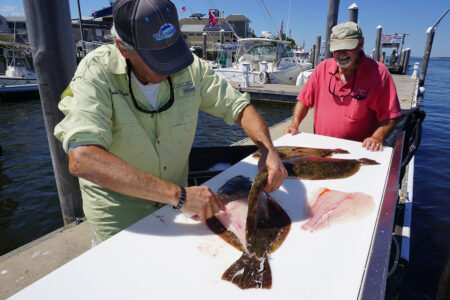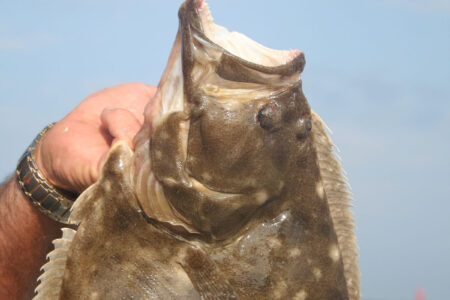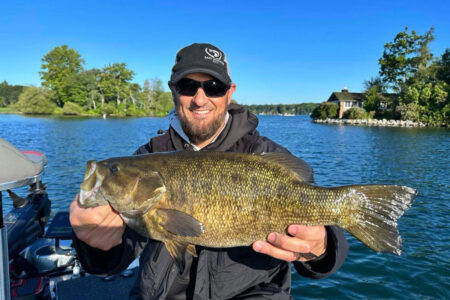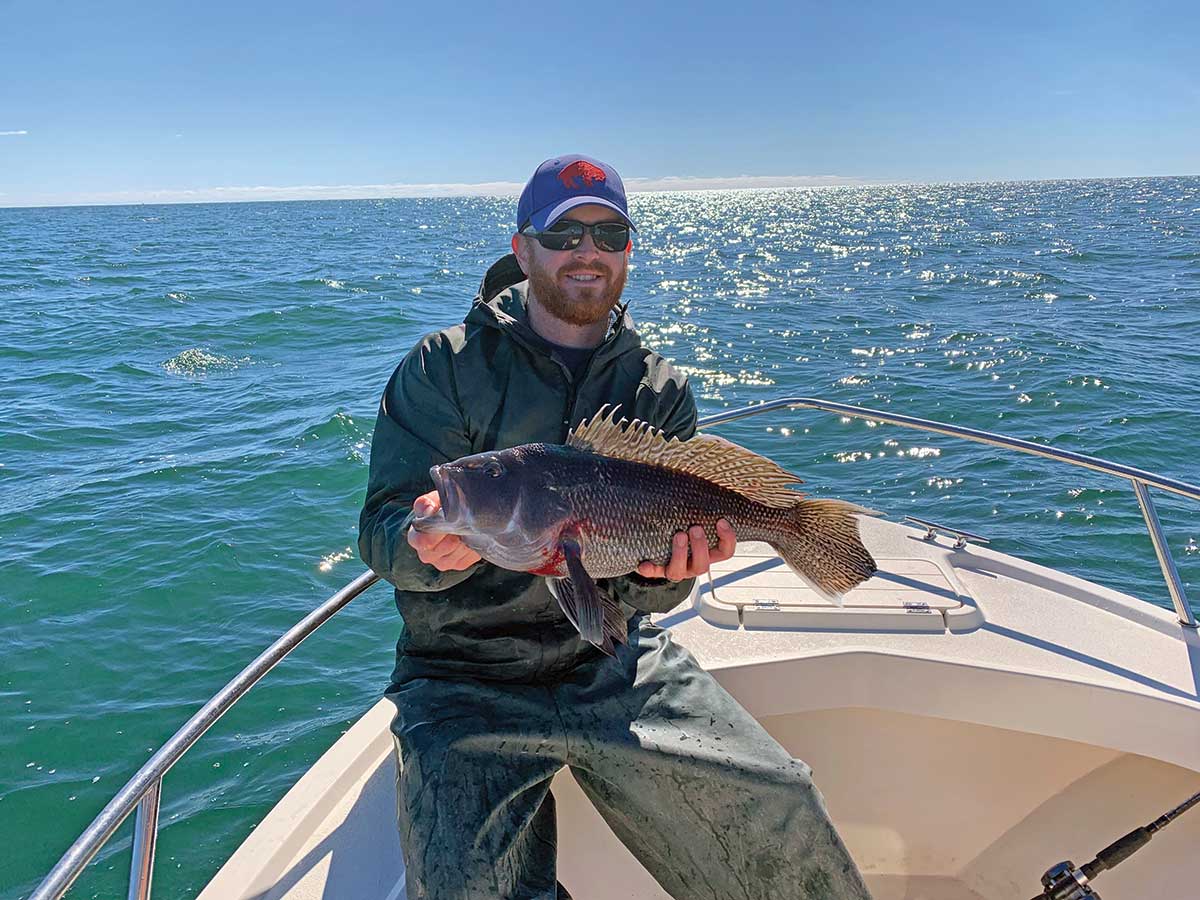
From top to bottom, small naked diamond jigs are one of the most productive and versatile lures available.
One of my favorite parts about fishing is that it is a constant learning process. Every trip out—whether fishing alone or with friends—is a chance to learn and develop new skills while honing existing ones. This past fall while fishing on a friend’s boat off Montauk, I took a crash course in fishing small diamond jigs and came to appreciate them as one of the most versatile and productive baits around.
Setting out from the dock, our plan was to look for schools of blitzing false albacore and striped bass in the morning before switching over to bottom fishing for black sea bass and hopefully cod in the afternoon. Not being particularly familiar with the fishery, I packed a variety of lures I thought would work for the range of species we were set to encounter based on past trips in other areas. Following the captain’s lead, we primarily fished small diamond jigs in the 2- to 5-ounce range throughout the day, a presentation I was not planning on leading with when originally gearing up for the trip. However, we ended up catching dozens of stripers, a few false albacore, a boat limit of black sea bass, a nice bonito, and as a treat a few bonus cod that really put the trip over the top. In the afterglow of such a great day on the water I was left with a few lasting impressions about the value of small diamond jigs and a certainty that I would not leave the dock without them again.
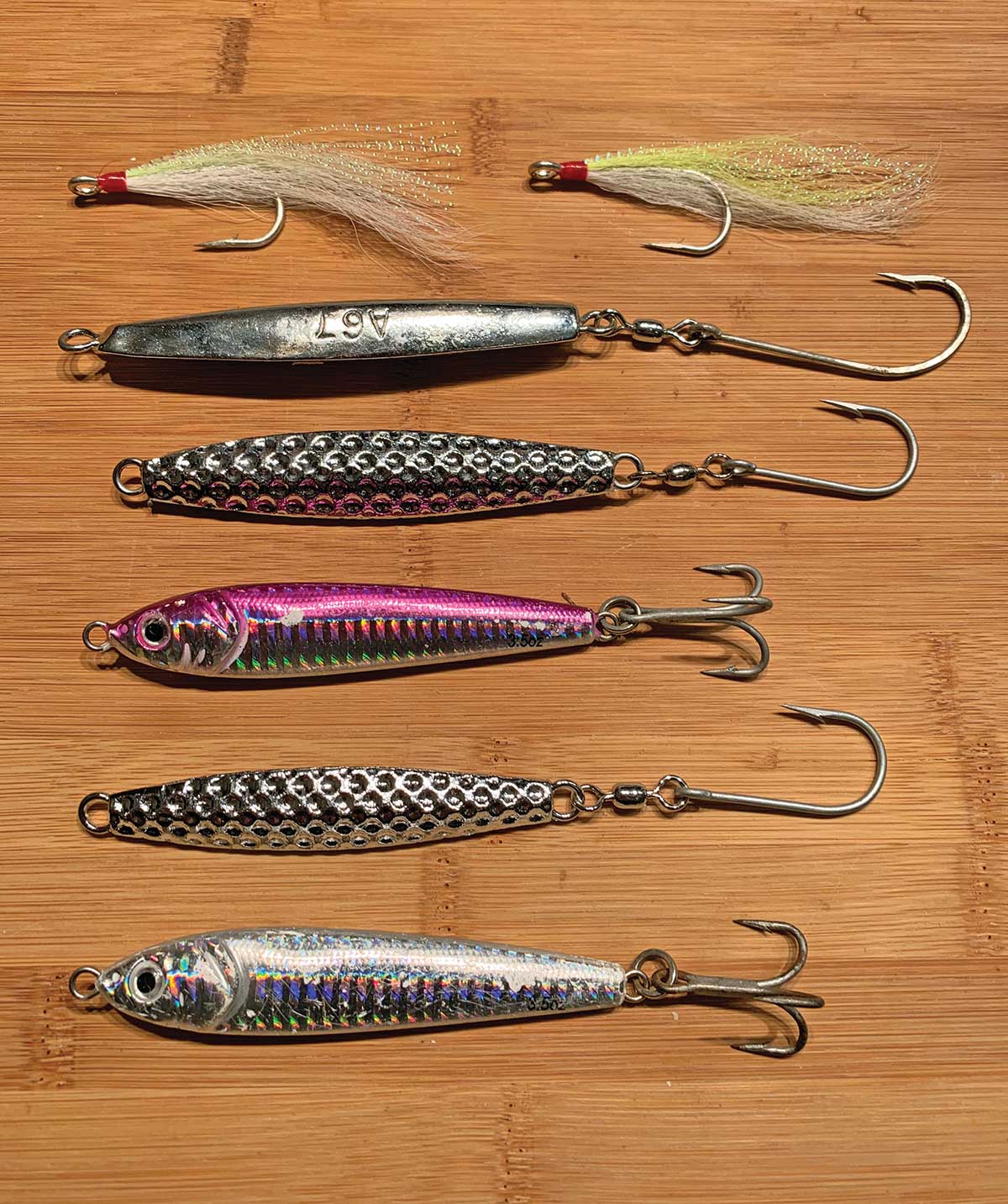
One aspect of fishing with diamond jigs that really stood out was their ability to produce sea bass and cod without the addition of scented baits like squid, clams, or even Berkley Gulp. While there is no denying the productivity of these scented offerings, they also tend to draw in the scourge of dogfish, which can make it next to impossible to land edible target species such as sea bass and cod. Reports from the party boat fleet that day noted there were plenty of sea bass around, “if you could get through the dogfish.” Using our bare jigs we did not catch a single dogfish even though on multiple occasions we saw them following our sea bass to the surface, looking for freebies coughed up by the hooked fish. Not only were the bare jigs able to avoid the dogs, but they were legitimately productive and a fun way to fish.
Scented baits are a tried and true way to put fish in the boat, but they just can’t match up to the convenience and fun of simply tying on a jig without having to buy or deal with bait. I find working a jig and feeling the aggressive strikes to be much more fun than just holding on to a rod waiting for something to take a baited hook. The feeling of a jig as it’s stopped in its tracks mid lift gives me much more of an appreciation for the predators that black sea bass and cod truly are. Further, the technique couldn’t be simpler; lower the jig to the bottom, take one or two turns on the reel, and then lift the rod in long sweeps while allowing the jig to flutter back to the bottom.
Don’t think these jigs are just for bottom dwellers, they can also be lights-out for schools of bass that are spread throughout the water column feeding on sand eels. On the earlier-mentioned trip, we were able to effectively work the whole water column in one of two ways. The jigs cast well and could be lobbed towards blitzing fish and allowed to sink through the school. If a fish didn’t hit on the drop, the jig was steadily retrieved back to the boat. The jigs actually have a subtle kicking action on the retrieve that triggers bites as the jig was brought back up diagonally through the water column. If fish were marked on the depth sounder beneath the boat the jigs could just be dropped down to the depths of the marks and then worked with vertical sweeps of the rod. With as finicky and line-shy they’re said to be, I was really surprised that we even caught a few albies and bonito on the jigs, which were essentially shiny 3-ounce chunks of lead with a big hook on the back. This presentation stands in stark contrast to smaller finesse presentations such as Deadly Dicks and epoxy jigs typically associated with fooling albies and only served to build my confidence in the method.
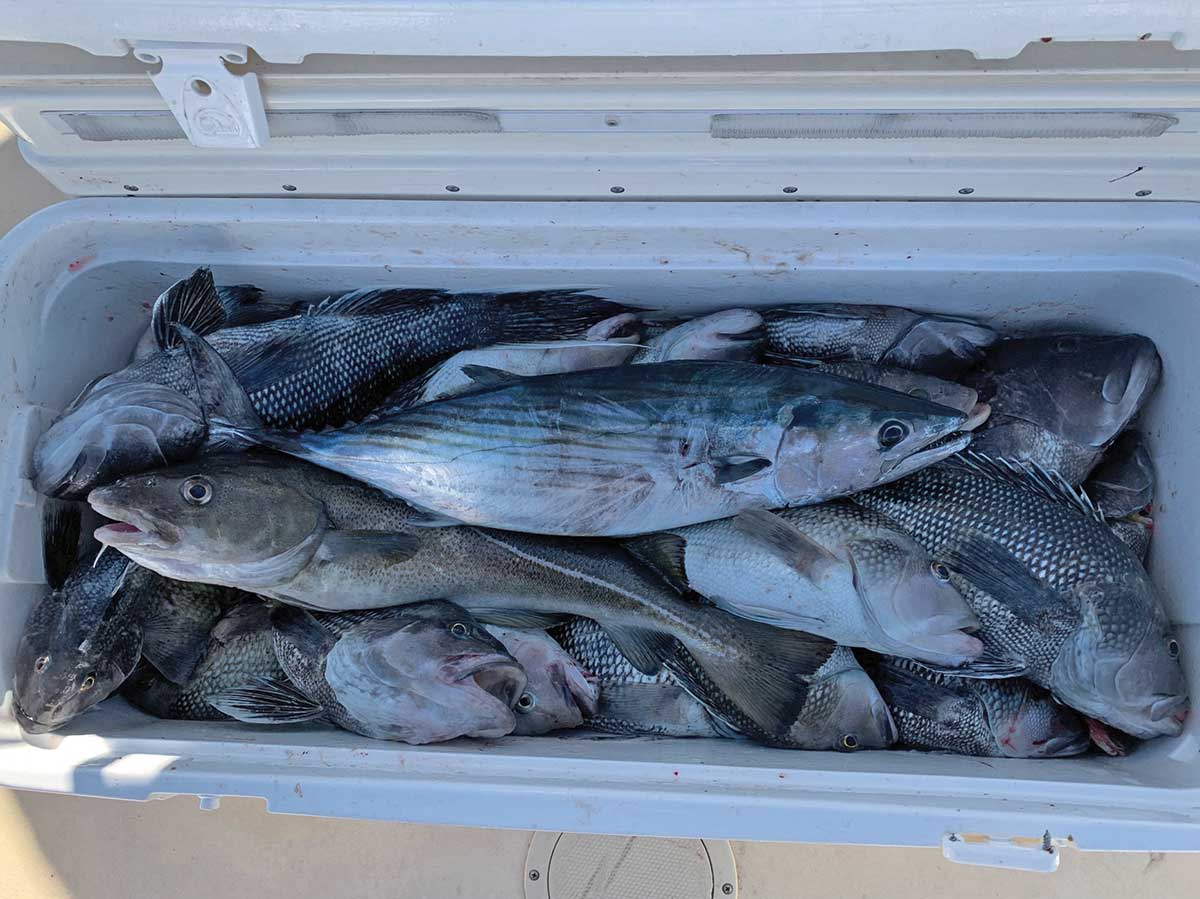
Jigs in the 2- to 6-ounce range should cover depths from 20 to 100 feet and the range of normal currents. As with any jigging scenario, the goal is to use the lightest jig possible based on the conditions. I don’t think the specific type of jig is particularly important so long as it is made of quality components and has a nice fluttering action on the drop. I have had success with hammered diamond jigs and herring style jigs by Hogy. A medium weight conventional rod rated for roughly 15- to 30-pound test paired with a compact powerhouse reel such as an Avet SX or Shimano Torium spooled with 20- or 30-pound braid makes for a light and capable combo that can comfortably be fished all day long. For leader I prefer 10 feet of 40-pound fluorocarbon secured to the braid with a low profile knot and tied to a Tactical Angler clip. The clip makes it easy to quickly switch out jig weights as needed. A small bucktail teaser is an optional addition and can be added via a dropper loop approximately 18 to 24 inches up from the jig. The teaser jig combination can produce double-headers on sea bass and actually produced what I am convinced is the first-ever black sea bass and bonito double-header! A 5-pound or so bonito hit the teaser, and a sea bass took the jig and took quite a ride courtesy of the speedy bonito.
Whether you are looking to beat the dogfish hoard by fishing a bare jig, or you just want a versatile bait that you can fish all day regardless of what is biting, the venerable diamond jig is up to the task.
